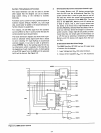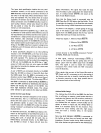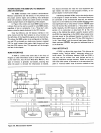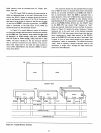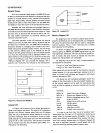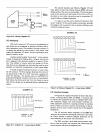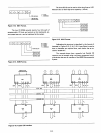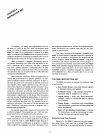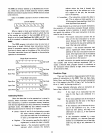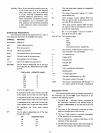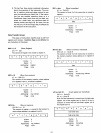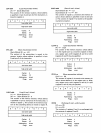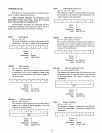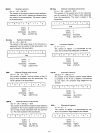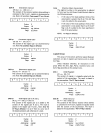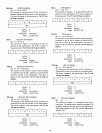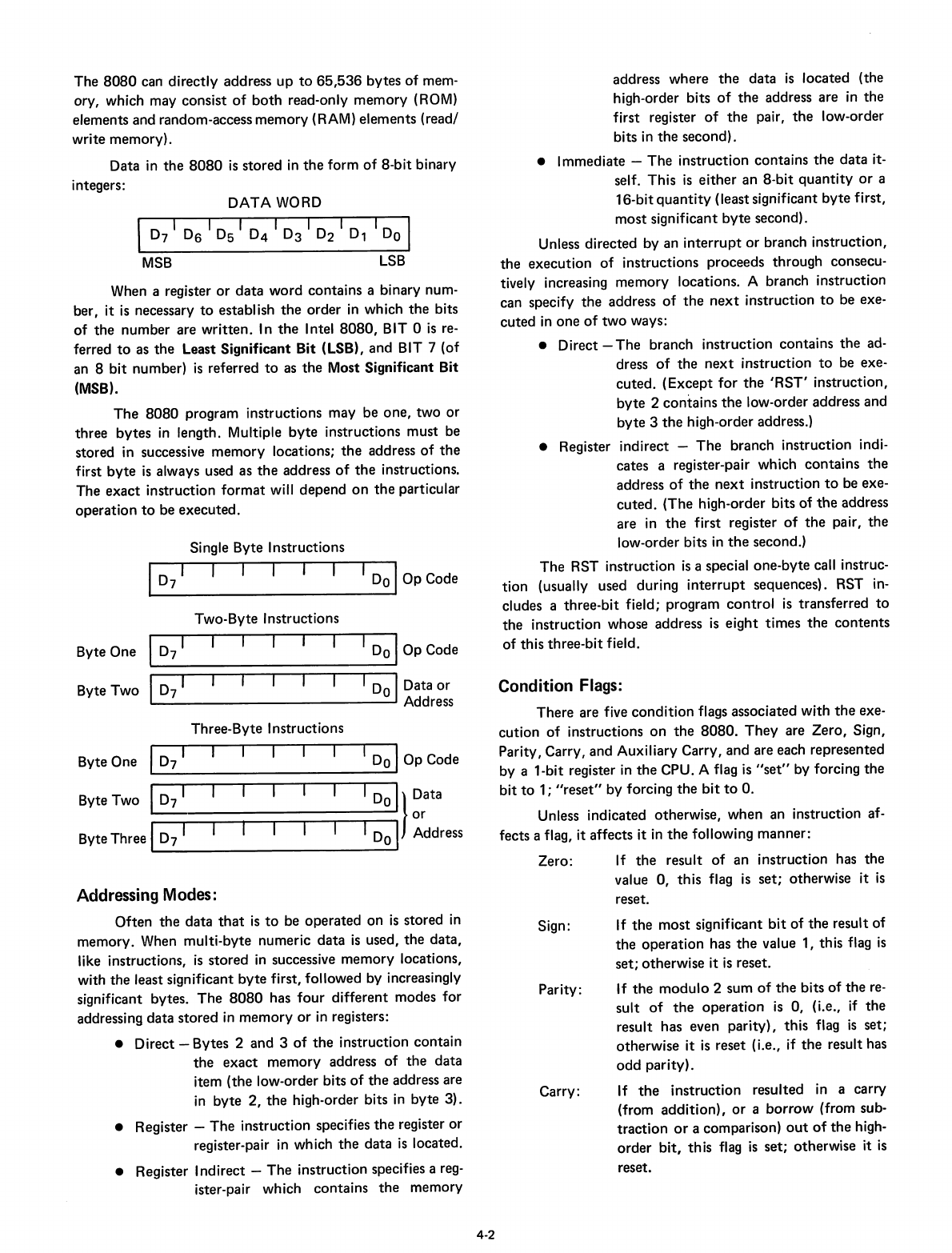
Condition Flags:
There
are five
condition
flags associated
with
the
exe-
cution
of
instructions
on
the
8080.
They
are
Zero,
Sign,
Parity, Carry,
and
Aux
iIiary Carry,
and
are each represented
by a
l-bit
register
in
the
CPU. A flag
is
"set"
by forcing
the
bit
to
1; "reset" by forcing
the
bit
to
O.
Unless indicated otherwise,
when
an instruction af-
fects a flag, it affects it
in
the
following
manner:
Zero: If
the
result
of
an
instruction
has
the
value
0,
this
flag
is
set;
otherwise it
is
reset.
address
where
the
data
is
located
(the
high-order bits
of
the
address are
in
the
first register
of
the
pair,
the
low-order
bits
in
the
second).
• Immediate -
The
instruction
contains
the
data
it-
self. This
is
either
an
8-bit
quantity
or
a
16-bit
quantity
(least significant
byte
first,
most
significant
byte
second).
Unless directed by an
interrupt
or
branch
instruction,
the
execution
of
instructions
proceeds
through
consecu-
tively increasing
memory
locations. A branch instruction
can specify
the
address
of
the
next
instruction
to
be exe-
cuted
in
one
of
two
ways:
• Direct -
The
branch
instruction
contains
the
ad-
dress
of
the
next
instruction
to
be exe-
cuted.
(Except
for
the
'RST'
instruction,
byte
2
contains
the
low-order address
and
byte
3
the
high-order address.)
• Register indirect -
The
branch
instruction
indi-
cates a register-pair which
contains
the
address
of
the
next
instruction
to
be exe-
cuted.
(The
high-order
bits
of
the
address
are
in
the
first register
of
the
pair,
the
low-order bits
in
the
second.)
The
RST instruction
is
a special
one-byte
call instruc-
tion
(usually used during
interrupt
sequences). RST in-
cludes a
three-bit
field; program
control
is
transferred
to
the
instruction whose address
is
eight
times
the
contents
of
this
three-bit
field.
The
8080
can
directly
address
up
to
65,536
bytes
of
mem-
ory, which may
consist
of
both
read-only
memory
(ROM)
elements and random-access
memory
(RAM)
elements
(read/
write
memory).
Oata
in
the
8080
is
stored
in
the
form
of
8-bit
binary
integers:
OATA
WORO
I
I 1 1 I 1 I I I
07
06
05
04 03
02
D1
00
MSB
LSB
When a register
or
data
word
contains
a binary num-
ber, it
is
necessary
to
establish
the
order
in
which
the
bits
of
the
number
are
written.
In
the
Intel
8080,
BIT 0
is
re-
ferred
to
as
the
Least Significant Bit (LSB),
and
BIT 7 (of
an 8
bit
number)
is
referred
to
as
the
Most Significant Bit
(MSB).
The
8080
program instructions
may
be
one,
two
or
three
bytes
in
length. Multiple
byte
instructions
must
be
stored in successive
memory
locations;
the
address
of
the
first
byte
is
always used as
the
address
of
the
instructions.
The
exact
instruction
format
will
depend
on
the
particular
operation
to
be executed.
Si
ngle Byte Instructions
Two-Byte Instructions
Byte One
1_
0
_7_'
' I
__
0.......J
o
I
Op
Code
Byte
Two
I
D7
I I Do IOata
or
-,
-------------,
Address
Three-Byte Instructions
Byte One
I_D_7_
1
1_
0
0
I
Op
Code
Byte Two
I
D7
1
I Do
I)
Oata
or
Byte Three ID7 I I Do I Address
Addressing Modes:
Often
the
data
that
is
to
be
operated
on
is
stored
in
memory.
When
multi-byte
numeric
data
is
used,
the
data,
like instructions,
is
stored
in
successive
memory
locations,
with
the
least significant
byte
first, followed by increasingly
significant bytes.
The
8080
has
four
different
modes for
addressing
data
stored
in
memory
or
in
registers:
• Oirect - Bytes 2
and
3
of
the
instruction
contain
the
exact
memory
address
of
the
data
item (the low-order bits
of
the
address are
in
byte
2,
the
high-order bits
in
byte
3).
• Register -
The
instruction specifies
the
register
or
register-pair
in
which
the
data
is
located.
• Register Indirect -
The
instruction specifies a reg-
ister-pair which
contains
the
memory
4-2
Sign:
Parity:
Carry:
If
the
most
significant
bit
of
the
result
of
the
operation
has
the
value 1, this flag
is
set;
otherwise
it
is
reset.
If
the
modulo
2 sum
of
the
bits
of
the
re-
sult
of
the
operation
is
0, (Le., if
the
result has even
parity),
this
flag
is
set;
otherwise
it
is
reset (Le., if
the
result has
odd
parity).
If
the
instruction
resulted in a carry
(from
addition),
or
a
borrow
(from sub-
traction
or
a comparison)
out
of
the
high-
order
bit,
th
is
flag
is
set; otherwise it
is
reset.



